
Medieval Magic in Sighisoara
Explore Sighisoara, a stunning medieval town in Transylvania, Romania. Discover its rich history, vibrant culture, and breathtaking landscapes.
Nestled in the heart of Transylvania, Sighisoara is a city that seems frozen in time. This enchanting medieval town is a UNESCO World Heritage Site and one of the best-preserved fortified cities in Europe. Walking through its cobblestone streets, you feel as if you've stepped into a fairy tale. Colorful houses with ancient facades line the narrow alleys, while the clock tower stands tall, offering panoramic views of the surrounding landscape. Sighisoara is also famous for being the birthplace of Vlad the Impaler, the real-life inspiration for Bram Stoker's Dracula. You can visit the house where he was born, now a museum and restaurant. History lovers will be captivated by the many historical buildings, including the Church on the Hill and the fortified towers that once protected the city. Beyond its rich history, Sighisoara is a vibrant cultural hub. The city hosts various festivals throughout the year, including the renowned Medieval Festival, where you can experience jousting tournaments, traditional crafts, and medieval music. The local cuisine is a delightful mix of Romanian and Hungarian flavors, best enjoyed in one of the many charming restaurants around the main square.
Local tips in Sighisoara
- Visit the Clock Tower early in the morning to avoid crowds and get the best views.
- Wear comfortable shoes as the cobblestone streets can be uneven.
- Try the local specialty, 'papanași,' a delicious Romanian doughnut dessert.
- Check the event calendar before you go; the Medieval Festival is a must-see.
- Explore the city at night when the streets are less crowded and beautifully lit.
Medieval Magic in Sighisoara
Nestled in the heart of Transylvania, Sighisoara is a city that seems frozen in time. This enchanting medieval town is a UNESCO World Heritage Site and one of the best-preserved fortified cities in Europe. Walking through its cobblestone streets, you feel as if you've stepped into a fairy tale. Colorful houses with ancient facades line the narrow alleys, while the clock tower stands tall, offering panoramic views of the surrounding landscape. Sighisoara is also famous for being the birthplace of Vlad the Impaler, the real-life inspiration for Bram Stoker's Dracula. You can visit the house where he was born, now a museum and restaurant. History lovers will be captivated by the many historical buildings, including the Church on the Hill and the fortified towers that once protected the city. Beyond its rich history, Sighisoara is a vibrant cultural hub. The city hosts various festivals throughout the year, including the renowned Medieval Festival, where you can experience jousting tournaments, traditional crafts, and medieval music. The local cuisine is a delightful mix of Romanian and Hungarian flavors, best enjoyed in one of the many charming restaurants around the main square.
When is the best time to go to Sighisoara?
Iconic landmarks you can’t miss
The Clock Tower
Explore the stunning Clock Tower of Sighișoara, a captivating historical landmark that offers breathtaking views and rich cultural insights.

Sighișoara Citadel
Discover Sighișoara Citadel, a UNESCO World Heritage Site blending rich history, stunning architecture, and the birthplace of Vlad the Impaler in Romania.

Concordia
Discover Concordia: A delightful restaurant and observation deck in Sighișoara, where local flavors meet stunning views in a vibrant atmosphere.

Gasthaus Altepost
Experience authentic Romanian cuisine and stunning views at Gasthaus Altepost in the heart of Sighișoara, a family-friendly dining gem.
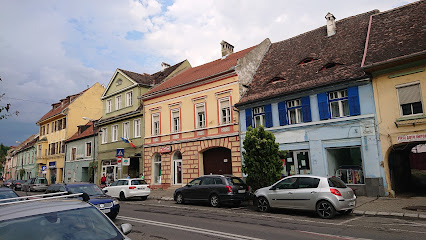
The Covered Stairway
Experience the rich history and stunning architecture of The Covered Stairway in Sighișoara, a must-visit tourist attraction in Romania.

Medieval Cafe Restaurant
Experience the charm of medieval Sighișoara at the Medieval Cafe Restaurant, where history meets delectable Romanian cuisine in a cozy atmosphere.

Vlad Dracul Restaurant
Discover the medieval charm and culinary delights of Vlad Dracul Restaurant in Sighișoara, where history meets traditional Romanian cuisine.

Central Park
Discover comfort and elegance at Central Park Hotel in Sighișoara, a perfect base for exploring the charm of this medieval town.

Monastery of St. Demetrius Sighisoara
Visit the Monastery of St. Demetrius in Sighisoara for a blend of spiritual solace and architectural beauty in a serene atmosphere.

Casa Cositorarului
Discover the enchanting Casa Cositorarului in Sighișoara, a cozy boarding house where history meets comfort in Romania's medieval gem.

Casa Wagner
Discover the charm of Casa Wagner, a historic hotel in Sighișoara, blending comfort with a rich cultural experience in stunning Transylvania.

Biserica din Deal
Explore Biserica din Deal, a stunning Lutheran church in Sighisoara, rich in history and architectural beauty, offering breathtaking views and serene ambiance.

Venesis Houe Pension
Discover the enchanting ambiance of Venesis House Pension in Sighișoara, a charming guest house that immerses you in local history and comfort.

Savri House
Discover the charm of Sighișoara while enjoying the modern comforts of Savri House, your perfect retreat in Romania's medieval heart.

Voynich Cafe & Pub
Discover the unique flavors and cozy ambiance at Voynich Cafe & Pub, a charming spot in Sighișoara for cocktails, espresso, and local hospitality.

Unmissable attractions to see
The Saltmine of Praid
Explore the breathtaking depths of Praid Saltmine, a unique blend of history, natural beauty, and therapeutic adventure in Romania's Transylvania.

Rupea Citadel
Discover the rich history and stunning views at Rupea Citadel, a majestic fortress in the heart of Transylvania, Romania.

Medieval Fortress of Târgu Mureș
Explore the Medieval Fortress of Târgu Mureș, a captivating historical landmark steeped in rich Romanian heritage and breathtaking views.

The Clock Tower
Explore Sighișoara's Clock Tower, a captivating historical landmark offering rich heritage, stunning views, and a glimpse into medieval life.

The Fortified Church of Biertan
Discover the Fortified Church of Biertan: A stunning blend of history, architecture, and culture in the heart of Transylvania.

The Palace of Culture
Explore the Palace of Culture in Târgu Mureș, a stunning cultural hub featuring museums, art galleries, and a rich history waiting to be discovered.

The Covered Stairway
Explore the Covered Stairway in Sighișoara, a historical gem offering stunning views and a glimpse into Romania's medieval past.

Domeniul Dracula Daneș
Experience the magic of nature and culture at Domeniul Dracula Daneș, a top tourist attraction in Sighișoara with animal parks, horse riding, and organic dining.

Târgu Mureș National Theatre
Discover Târgu Mureș National Theatre, a cultural treasure showcasing the finest in performing arts and a vital part of Romania's artistic landscape.

Evanghelic C.A. Fortified Church Viscri
Explore the Evanghelic C.A. Fortified Church in Viscri, a UNESCO World Heritage site blending rich history, stunning architecture, and breathtaking views.

Biserica din Deal
Discover the stunning Biserica din Deal in Sighișoara – a breathtaking historical landmark with Gothic architecture and captivating views.

The Holy Trinity Church
Explore the Holy Trinity Church in Sighișoara, a stunning Orthodox gem showcasing rich history and breathtaking architecture in Romania's medieval heart.

Saint Margaret evangelical church Mediaş
Discover the architectural beauty and cultural significance of Saint Margaret Evangelical Church in Mediaș, a historical gem in Romania.

Petofi Museum
Discover the life and works of Sándor Petőfi at the Petofi Museum in Albești, a unique cultural experience for literature lovers and history enthusiasts.
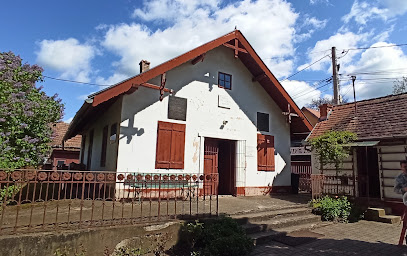
MYstical transylvania
Experience the rich culture, art, and history of Sighișoara at Mystical Transylvania, a captivating blend of museum, gallery, and culinary delight.

Essential places to dine
Restaurant La Perla
Discover Restaurant La Perla in Sighișoara: where gourmet pizzas meet traditional Romanian cuisine in a cozy gastropub setting.

Concordia
Experience exquisite dining at Concordia in Sighișoara - savor local flavors with stunning views from the observation deck.
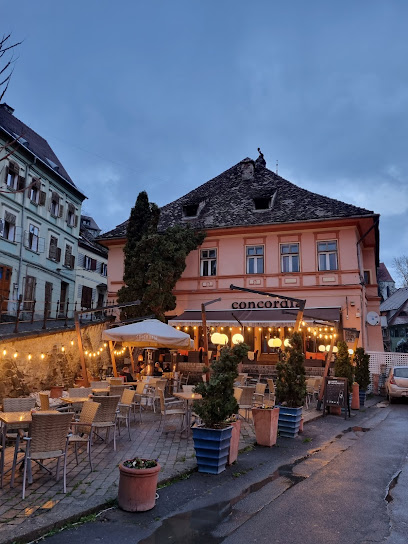
Martini
Experience exquisite dining at Martini in Sighișoara – where local flavors meet modern cuisine in a charming setting.

Hotel Transilvania
Discover exquisite dining at Hotel Transilvania – where Romanian tradition meets Asian flair in Sighișoara.

Gasthaus Altepost
Experience authentic Romanian cuisine with stunning views at Gasthaus Altepost in Sighișoara - perfect for families and food lovers alike.

Ferdinand
Discover authentic Romanian cuisine at Casa Ferdinand in Sighișoara, where history meets flavor in an inviting bistro atmosphere.

Quattro Amici
Experience authentic Italian cuisine at Quattro Amici in Sighișoara – where every pizza tells a story.

Mimoza
Discover Mimoza in Sighișoara: A culinary haven blending traditional Romanian flavors with international flair.
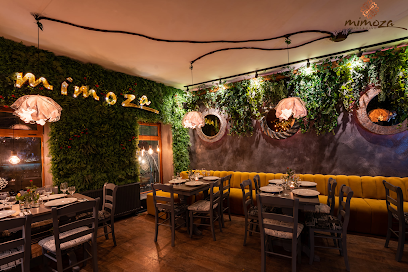
Mercure Sighisoara Binderbubi Hotel & Spa
Discover luxury and history at Mercure Sighisoara Binderbubi Hotel & Spa—your gateway to exploring Romania's medieval treasures.

Medieval Cafe Restaurant
Experience authentic Romanian cuisine amidst medieval charm at Medieval Cafe Restaurant in Sighișoara.

Vlad Dracul Restaurant
Experience authentic Romanian cuisine at Vlad Dracul Restaurant in Sighișoara – where history meets delicious flavors.

Camping Restaurant Vila Franka
Discover Camping Restaurant Vila Franka - a perfect blend of delicious dining and exciting outdoor adventures in Sighișoara.

San Marco Restaurant&Pizzerie
Discover delicious Italian cuisine at San Marco Restaurant & Pizzerie in Sighișoara – a perfect blend of flavors in a charming setting.

Casa Wagner
Experience authentic Romanian cuisine and rich history at Casa Wagner in Sighișoara's stunning medieval setting.

Veneția
Discover authentic Romanian flavors at Veneția - Sighișoara's favorite pizza restaurant offering delicious dishes in a cozy atmosphere.
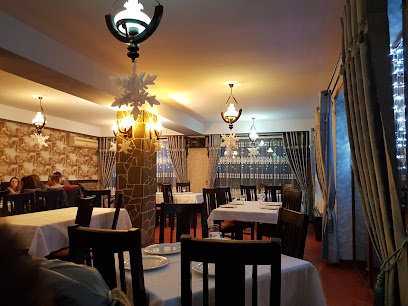
Markets, malls and hidden boutiques
Atelier Specialty Coffee
Discover the rich flavors of expertly crafted brews at Atelier Specialty Coffee, a must-visit café in the heart of Sighișoara, Romania.

Totim Com
Experience the local culture at Totim Com, a premier warehouse store in Sighișoara offering a unique shopping experience with quality products.

Pepco
Discover affordable fashion, charming baby clothes, and delightful toys at Pepco in Sighișoara's Retail Park.
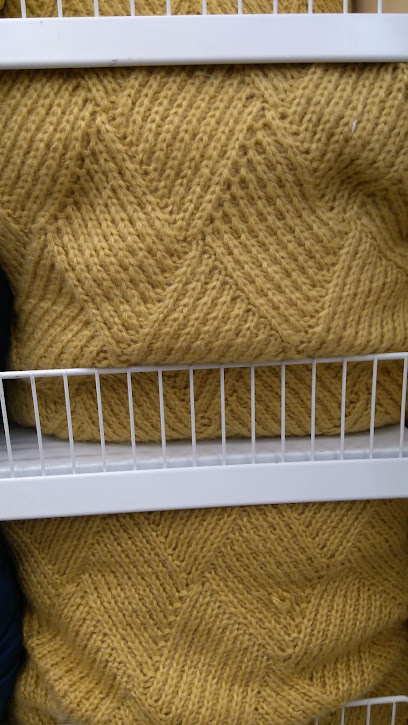
Teo's Cellar
Experience the rich flavors and warm hospitality of Teo's Cellar, a treasured winery and guest house in the heart of Sighișoara.

UP Specialty Coffee
Discover the perfect blend of local charm and exceptional coffee at UP Specialty Coffee in Sighișoara, Romania.

Coralia
Explore Coralia in Sighișoara for unique local crafts, gifts, and souvenirs that embody the rich heritage of Romania's medieval town.

Meșter Shop
Explore the unique offerings of Meșter Shop in Sighișoara – a hardware store that showcases local craftsmanship and a taste of Romanian culture.

Spoonman's Shop
Explore traditional Romanian craftsmanship at Spoonman's Shop in Sighișoara, a must-visit craft store and cultural experience for every traveler.

Magazin Chinezesc Bubusheng S.R.L.
Explore stylish clothing and unique fashion at Magazin Chinezesc Bubusheng S.R.L. in Sighișoara, where quality meets local charm.

Sweet Dreams
Experience the joy of artisanal ice cream at Sweet Dreams, a must-visit destination in Sighișoara for every dessert lover.

Librăria Hyperion
Explore a treasure trove of books and stationery at Librăria Hyperion in Sighișoara, a haven for literary enthusiasts and creative souls.

Sablee Boutique
Discover Sablee Boutique in Sighișoara: A cozy coffee shop serving exquisite brews and delicious pastries in a historic setting.

Transtex
Shop in style at Transtex, a premier clothing store in Sighișoara, offering trendy apparel that blends elegance with local charm.

Magazin Antichitati Sighisoara Cetate ANTIQUES SHOP
Explore a world of history at Magazin Antichitati Sighisoara Cetate, where timeless antiques and unique treasures await every visitor.

Gifty Shop
Discover unique artistic handicrafts at Gifty Shop in Sighișoara, where every piece tells a story of Romanian culture and creativity.
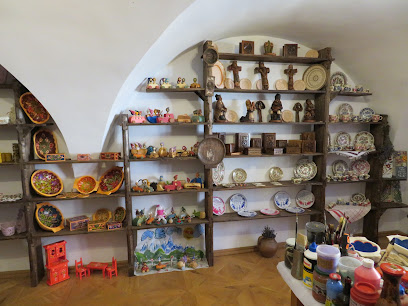
Essential bars & hidden hideouts
Concordia
Experience the best of Romanian cuisine and breathtaking views at Concordia, Sighișoara's vibrant bar and restaurant.

Mimoza
Experience the culinary delights of Mimoza in Sighișoara, where local flavors and a cozy atmosphere combine for an unforgettable dining experience.

Vintage Lounge
Experience the charm of Sighișoara at Vintage Lounge—your cozy retreat for drinks, dining, and relaxation in the heart of this medieval town.

Joseph Haydn house
Discover the Joseph Haydn House in Sighișoara - a blend of history, comfort, and exquisite gastronomy in a UNESCO World Heritage site.

Joseph T Restaurant
Experience the exquisite fusion of traditional Romanian cuisine and fine wines at Joseph T Restaurant in the heart of Sighișoara.

Voynich Cafe & Pub
Experience the best of Sighișoara at Voynich Cafe & Pub, where local charm meets a vibrant drink selection in a cozy atmosphere.
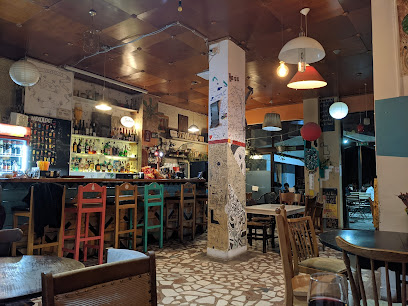
ReFresh
Experience the vibrant flavors of Sighișoara at ReFresh, where delicious falafel, burgers, and live music create memorable moments.

Clubul CFR
Discover the vibrant atmosphere of Clubul CFR in Sighișoara, where locals and tourists gather for a delightful bar experience.

Baum Games
Discover the excitement of live sports and delicious food at Baum Games, Sighișoara's premier sports bar for tourists and locals.

VILLA VINÈA
Villa Vinèa: A Wine Bar Experience in Sighișoara, Showcasing Exquisite Local Wines in a Cozy Atmosphere.

Junona Games 1 Decembrie Nr 16
Discover Junona Games in Sighișoara: A vibrant bar offering drinks, games, and a warm atmosphere for relaxation and socializing.

Venesis Bar & Rent a Bike
Discover relaxation and adventure at Venesis Bar & Rent a Bike, where delightful drinks meet scenic cycling in historic Sighișoara.
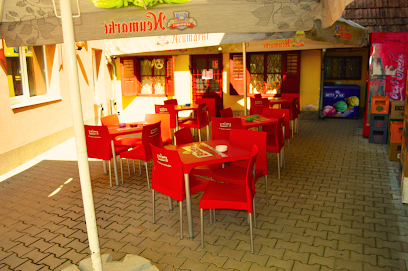
Anton Pann
Discover the charm of Anton Pann, a cozy bar in Sighișoara, offering local beverages and a welcoming atmosphere for every traveler.

El Paso Bar
Experience the vibrant atmosphere of El Paso Bar, a perfect lounge in Sighișoara for cocktails and conversation.

Station pub
Experience the heart of Sighișoara at Station Pub, where local cuisine and charming ambiance come together for an unforgettable visit.

Travel experiences inspired by this city
Explore more travel diariesLocal Phrases
-
- HelloSalut
[sah-loot] - GoodbyeLa revedere
[lah reh-veh-deh-reh] - YesDa
[dah] - NoNu
[noo] - Please/You're welcomeTe rog
[teh rohg] - Thank youMulțumesc
[mool-tsoo-mesk] - Excuse me/SorryScuzați-mă
[skoo-zah-tsi muh] - How are you?Ce faci?
[cheh fahch] - Fine. And you?Bine. Și tu?
[bee-neh. shee too] - Do you speak English?Vorbiți engleză?
[vor-bee-tsi eng-leh-zuh] - I don't understandNu înțeleg
[noo in-tseh-leg]
- HelloSalut
-
- I'd like to see the menu, pleaseAș dori să văd meniul, vă rog
[ush doh-ree suh vud meh-nyool, vuh rohg] - I don't eat meatNu mănânc carne
[noo muh-nunk kar-neh] - Cheers!Noroc!
[noh-rok] - I would like to pay, pleaseAș dori să plătesc, vă rog
[ush doh-ree suh pluh-tesk, vuh rohg]
- I'd like to see the menu, pleaseAș dori să văd meniul, vă rog
-
- Help!Ajutor!
[ah-yoo-tor] - Go away!Du-te!
[doo-teh] - Call the Police!Sunați poliția!
[soo-nahts po-lee-tsia] - Call a doctor!Sunați un doctor!
[soo-nahts oon dok-tor] - I'm lostM-am pierdut
[mahm pyer-dooot] - I'm illSunt bolnav
[soont bohl-nav]
- Help!Ajutor!
-
- I'd like to buy...Aș dori să cumpăr...
[ush doh-ree suh koom-pur] - I'm just lookingDoar mă uit
[doh-ar muh ooit] - How much is it?Cât costă?
[kaht kohs-tuh] - That's too expensiveEste prea scump
[es-teh prah skoomp] - Can you lower the price?Puteți să scădeți prețul?
[poo-teh-tsi suh skuh-deh-ts preh-tsool]
- I'd like to buy...Aș dori să cumpăr...
-
- What time is it?Cât este ceasul?
[kaht es-teh chyas-ool] - It's one o'clockEste ora unu
[es-teh oh-rah oo-noo] - Half past (10)Jumătate (la zece)
[zhoo-muh-tah-teh (lah zeh-che)] - MorningDimineața
[dee-mee-neh-tsa] - AfternoonDupă-amiază
[doo-puh ah-mee-ah-zuh] - EveningSeara
[seh-ah-rah] - YesterdayIeri
[yeh-reh] - TodayAstăzi
[ah-stuhz] - TomorrowMâine
[muh-yeh-neh] - 1Unu
[oo-noo] - 2Doi
[doy] - 3Trei
[tray] - 4Patru
[paht-roo] - 5Cinci
[cheen-chee] - 6Șase
[shah-seh] - 7Șapte
[shahp-teh] - 8Opt
[opt] - 9Nouă
[noo-uh] - 10Zece
[zeh-che]
- What time is it?Cât este ceasul?
-
- Where's a/the...?Unde este unul/o...
[oon-deh es-teh oon-ool/oh] - What's the address?Care este adresa?
[ka-re es-teh ah-dre-sah] - Can you show me (on the map)?Puteți să-mi arătați (pe hartă)?
[poo-teh-tsi suh-mi ah-rah-tsa-tsi (peh har-tuh)] - When's the next (bus)?Când este următorul (autobuz)?
[kund es-teh oor-muh-toh-rool (ow-toh-booze)] - A ticket (to ....)Un bilet (spre...)
[oon bee-let (spreh)]
- Where's a/the...?Unde este unul/o...
History of Sighisoara
-
Sighisoara was founded by Transylvanian Saxons during the late 12th century. Initially, it served as a strategic outpost in the region, becoming one of the most important and fortified towns in Transylvania. The town's establishment was part of a broader effort by the Kingdom of Hungary to defend against invasions and to consolidate its control over the area.
-
Throughout the 14th and 15th centuries, Sighisoara evolved into a significant medieval stronghold. The construction of its defensive walls, fortified towers, and bastions began during this period. The most notable of these is the Clock Tower, which served as the main gate to the citadel. The fortifications were essential in defending the town from various threats, including Tatar invasions and internal conflicts.
-
During the medieval period, Sighisoara's economy flourished under the Saxon guild system, which organized tradesmen and craftsmen into various guilds. These guilds controlled trade, maintained quality standards, and played a significant role in the local governance. Each guild also took responsibility for the maintenance and defense of specific sections of the town's fortifications.
-
Sighisoara is famously known as the birthplace of Vlad III, also known as Vlad the Impaler or Vlad Dracula. Born in 1431, Vlad III was a member of the House of Drăculești. His father, Vlad II Dracul, lived in a house in Sighisoara, which has now become a popular tourist attraction known as the 'Casa Vlad Dracul.' Vlad III's life and legacy have significantly influenced the cultural and historical narrative of Sighisoara.
-
The 16th century brought significant religious changes to Sighisoara with the advent of the Protestant Reformation. The town witnessed the spread of Lutheranism among its Saxon inhabitants, leading to religious strife and the establishment of Lutheran churches. This period also saw conflicts between different Christian denominations, impacting the town's social and political landscape.
-
In the late 17th century, Sighisoara came under the control of the Habsburg Monarchy following the defeat of the Ottoman Empire in the region. This period marked the beginning of modernization, with improvements in infrastructure, trade, and education. The town continued to evolve, balancing its historical legacy with the pressures and opportunities of modernity.
-
In the 20th century, efforts to preserve Sighisoara's rich cultural heritage gained momentum. Significant restoration projects were undertaken to maintain the medieval architecture and fortifications. In 1999, Sighisoara's historic center was designated as a UNESCO World Heritage Site, recognizing its unique cultural and historical significance.
-
The Sighisoara Medieval Festival, initiated in the early 1990s, has become a hallmark of the town's cultural calendar. Held annually, the festival celebrates Sighisoara's medieval heritage with reenactments, performances, and crafts. It attracts visitors from around the world, offering a vibrant and immersive experience of medieval life.
Sighisoara Essentials
-
Sighisoara is located in the heart of Romania's Transylvania region. The nearest international airport is Târgu Mureș International Airport, around 60 kilometers away. From the airport, you can take a taxi or a shuttle bus to Sighisoara. Alternatively, you can fly into Bucharest or Cluj-Napoca and take a train or bus to Sighisoara. Train services are frequent and offer a scenic journey through the Romanian countryside.
-
Sighisoara is a small town, and most of its attractions are within walking distance. For longer trips, taxis are readily available and reasonably priced. Public buses operate within the town and connect to nearby villages. Renting a car is also an option if you plan to explore the wider Transylvania region at your own pace.
-
The official currency in Romania is the Romanian Leu (RON). Credit cards are accepted in most hotels, restaurants, and shops, but it is advisable to carry some cash, especially in smaller establishments and rural areas. ATMs are available throughout Sighisoara, so withdrawing cash should not be a problem.
-
Sighisoara is generally a safe destination for tourists. However, like any travel destination, it is advisable to take standard precautions. Avoid walking alone at night in poorly lit areas and keep an eye on your belongings in crowded places. There are no specific high-crime areas targeting tourists, but it is always best to stay vigilant and aware of your surroundings.
-
In case of emergency, dial 112 for immediate assistance. The local police station and medical facilities are available in Sighisoara. It is recommended to have travel insurance that covers medical emergencies. For minor health issues, there are several pharmacies in the town where you can purchase over-the-counter medications.
-
Fashion: Do dress modestly, especially when visiting religious sites. Avoid overly revealing clothing. Religion: Do respect local customs and traditions. Always cover your head when entering churches. Public Transport: Do be respectful and give up your seat to elderly passengers. Don't eat or drink on public transport. Greetings: Do greet people with a handshake. A slight bow of the head is also a sign of respect. Eating & Drinking: Do try local delicacies and accept food offerings graciously. Don't refuse hospitality, as it is considered impolite.
-
To experience Sighisoara like a local, visit the local markets where you can buy fresh produce and traditional Romanian goods. Engage with locals, as they are often friendly and willing to share stories about the town's history and culture. Don't miss the Clock Tower, which offers panoramic views of the town, and take the time to explore the cobblestone streets and colorful houses of the medieval citadel.
Trending Landmark in Sighisoara
Nearby Cities to Sighisoara
-
Things To Do in Brasov
-
Things To Do in Cluj-Napoca
-
Things To Do in Râmnicu Vâlcea
-
Things To Do in Deva
-
Things To Do in Pitesti
-
Things To Do in Târgu Jiu
-
Things To Do in Baia Mare
-
Things To Do in Focsani
-
Things To Do in Suceava
-
Things To Do in Bucharest
-
Things To Do in Craiova
-
Things To Do in Satu Mare
-
Things To Do in Iasi
-
Things To Do in Drobeta-Turnu Severin
-
Things To Do in Chernivtsi











